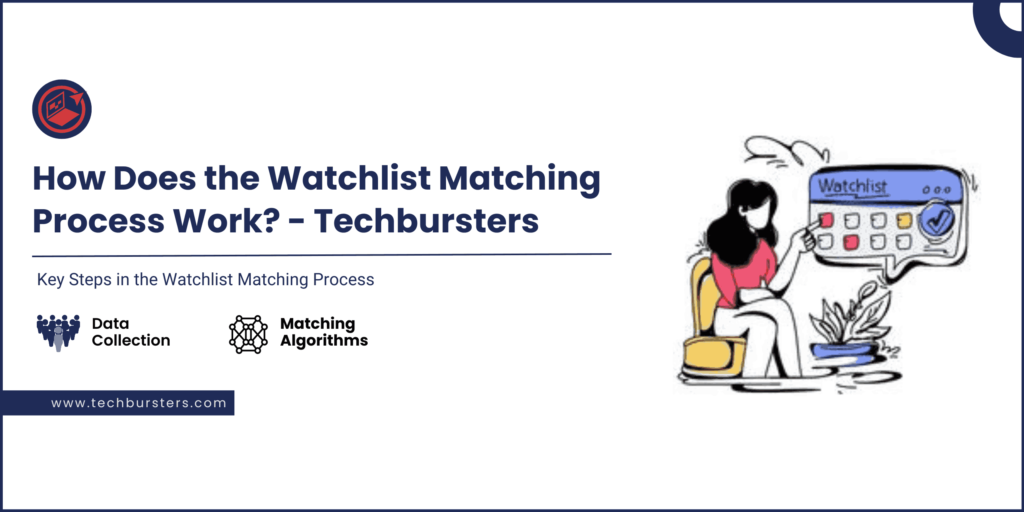
In the current globalized environment, organizations are under pressure to guarantee that they do not have any connections with those involved in criminal activities through a thorough global watchlist search.
Analyzing the current situation in the international world, it is possible to state that financial crime is rapidly expanding, and it is expected to exceed $1.6 trillion.
It is a crucial process that businesses consider to avoid doing business or hiring people related to unwanted individuals or organizations, as stated by the watchlist.
These lists are held by governments, international organizations, and regulating authorities. They contain names of persons and organizations related to money laundering, terrorism, fraud, and other unlawful activities.
The watchlist matching process helps companies to ensure that they do not associate themselves with high-risk entities.
What Is the Watchlist Matching Process?
Watchlisting is a process that entails running someone’s or an entity’s details against a watchlist. These watchlists are lists that are formed as databases of government, international organizations, and regulating authorities.
Some of them may contain names of individuals and firms that may be associates of or involved in some unlawful business.
Since more than 200 jurisdictions demand watchlist screening, it has become part of operational work in various companies around the world.
Bonus: Ensure your organization is protected by implementing a strong watchlist screening process. It will help you to identify and mitigate potential risks effectively.
Key Steps in the Watchlist Matching Process
Watchlist matching is critical for dictating organizations’ compliance with the legal frameworks and preventing the development of business relations with suspicious parties.
1) Data Collection
The first procedure that needs to be followed for a watch list match includes the collection of data on the individual or entity in question.
It is important for the data collected as even a small deviation from the parameters can lead to a missed match or the appearance of a false positive.
The findings have established that data inaccuracies can result in up to 35% of the screening outcomes being false positives.
Organizations normally employ other sources to confirm this information and gauge its credibility before proceeding with the screening.
2) Watchlist Screening
When the data is collected, it goes through watchlist screening. This step involves conducting some computations whereby the information that has been gathered.
It is then crosschecked with watch lists that may be general or those of the particular area or sector of the business.
This screening hopes to discover any possibility that could suggest a risk as per the findings of the match. This process involves watchlists that governments, international bodies, and regulatory agencies continually update.
More than 50,000 people were added to watchlists around the world in 2023 only, which proves the necessity of updating the lists.
3) Matching Algorithms
Complex matching algorithms form the central part of the actual watch list matching. These algorithms are designed to locate name hits as well as phonetic matches.
They are also capable of looking for similarities in spelling, translation, etc. The algorithms also include context factors, including the position of the individual or persons related to him, to increase the efficiency of the match.
Due to higher AI integration and optimization using machine learning, such algorithms can minimize FPs by 60% and help speed up the review process.
4) Flagging Potential Matches
When there is a match, the system marks such a record for further evaluation by a human being. Being flagged in a game does not necessarily imply that the individual or the entity involved is involved in any criminal activities.
There is some resemblance, and there could be a cause for concern as to the extent of this resemblance. In this analysis, flagged matches are significant in watchlist matching since they assist an organization in prioritizing certain cases.
10-15% of these matches are tagged for further scrutiny or investigation, which shows the software’s oversensitive and overcautious nature in equal measure.
5) Review and Decision-Making
Based on the outcomes mentioned above, once a potential match is identified, it goes through the compliance officers or through a system that analyzes the risk.
It has been pointed out that it is necessary to review such a match to know whether this type of match is genuine or could be simulated.
Compliance officers want to assess all the circumstances of the match and all the extra information and make a decision.
If the game is proven legal, then the organization may be required to undertake some other action.
Rising volumes of transactions also mean that ITE now operates about 70% automated initial reviews, which has greatly compressed the decision-making cycle.
6) Ongoing Watchlist Monitoring
Matching continues after stage one of the watchlist screening. When writing about watchlist monitoring, it is imperative to stress the importance of constant watchlist monitoring.
Watchlists may be updated regularly with new names or information about names already on the list.
This way, any alteration in the watchlist is promptly picked from the continuous monitoring performed by the tool.
It also offers leverage over compliance in the long run and ensures that risks are well managed.
